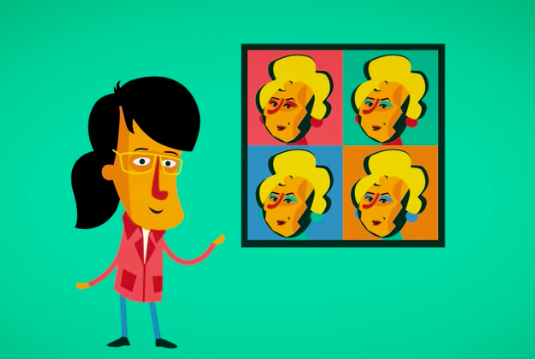10 ways to teach creativity in the classroom
By Laura McClure on May 7, 2015 in News + Updates

Education expert Sir Ken Robinson notes that in the factories of the 20th century, creativity was not valued. Yet in the startups of the 21st century, it’s critical for success. What can teachers do — right now — to prepare students for the world of the future? Below, 10 ways to teach creativity in the classroom:
1. Start student notebooks for ideas in the wild. If ideas are butterflies, notebooks are nets. Professional artists, scientists and writers often carry small notebooks to capture imaginative ideas before they fly away. For example, check out these ideas and sketches.
2. Explore new inspiration sources together. Creativity needs to be fed a steady diet of inspiration. Some tried and true sources? Nature, music, art, science fiction, travel — the list goes on. Anything that rewards student curiosity can feed creativity.
3. Research other makers during class. The world is full of people who regularly use their creativity to invent and make new things. Three great places to learn how they do it: Make, Instructables and Kickstarter.
4. Introduce mindfulness as a creativity tool. Science tells us that mindfulness meditation helps the brain. In the realm of creativity, it can boost a student’s ability to come up with imaginative solutions to a problem. For a great animated introduction to mindfulness meditation, check out Headspace.
5. Listen to fun stories about design. What is design? How does it affect our lives? This entertaining podcast shows how creative choices impact the world. To learn more about design, listen to 99% Invisible.
6. Brainstorm solutions to a common challenge. What’s the best way to come up with a great science fair project idea? Brainstorm a bunch of science fair project ideas first! Learn how to run a brainstorm in this article.
7. Invent a healthy snack for a picky eater. Health and food-related projects can be excellent ways to develop creative skills. Check out more experiential learning projects at DIY.org.
8. Try a real-world design challenge together. How might we improve learning and expand education opportunities for refugees around the world? This is a real-world design challenge that people are working on right now — and your class can participate in creating the solutions. Learn more at Amplify’s Refugee Education Challenge.
9. Begin #The100DayProject with your students. Do something creative, every day, for 100 days. Document your progress. It’s simple, but not easy! Read more about the #The100DayProject.
10. Start a TED-Ed Club at your school. Sometimes it’s hard to get students to share their creative ideas. A supportive club setting can help. Learn more about one option.
Tags: Creativity